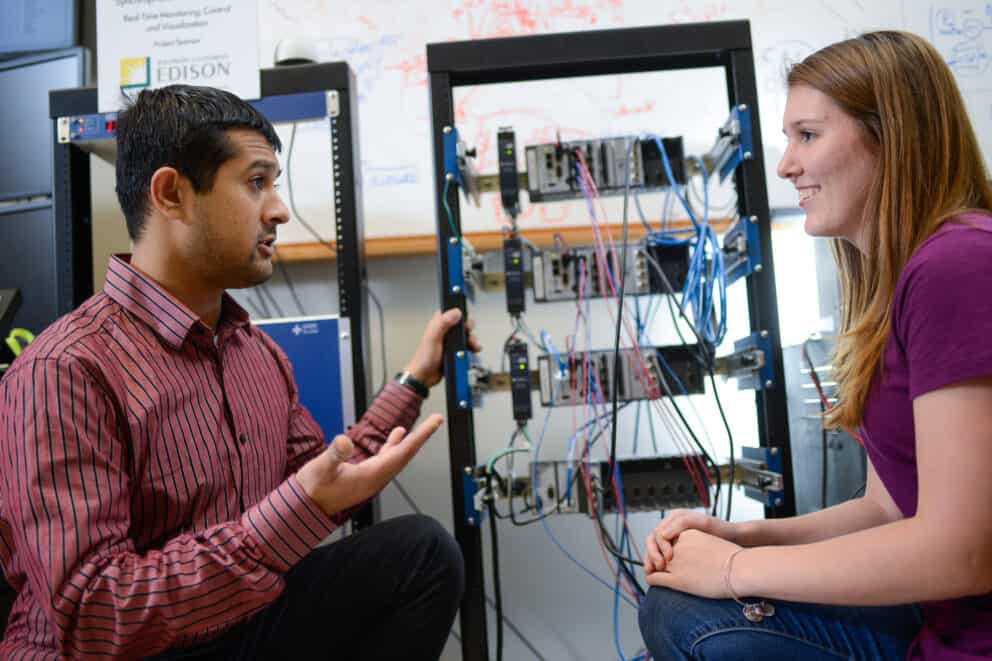Microgrid Co-design Platform
Microgrids are segments of the main electrical grid that can isolate when needed yet continue to provide energy from local resources such as solar PV, batteries, or generators. Microgrids can be as small as a single business or as large as an entire college campus. The FREEDM approach to designing and operating microgrids will enable them to integrate and effectively manage renewable generation on the distribution system, while providing power to critical loads during and after extreme weather events, when the rest of the grid may be damaged. Our approach with a customizable controller will reduce costs and enable true scalability.
Unified Virtual Oscillator Control
Typical grid connected converters use phasor domain controls such as droop control, power synchronization control (PSC), or virtual synchronous machine control. However, assumptions for these methods are only valid in the presence of substantial system inertia. FREEDM researchers developed a novel solution for weak grids with low inertia called Unified Virtual Oscillator Control. UVOC uses a space vector representation of AC voltage quantities to circumvent the approximations of droop-based methods. This technique was successfully demonstrated in a hardware implementation at FREEDM for interlinked microgrids under various operating conditions such as black start, islanding, and grid resynchronization.
